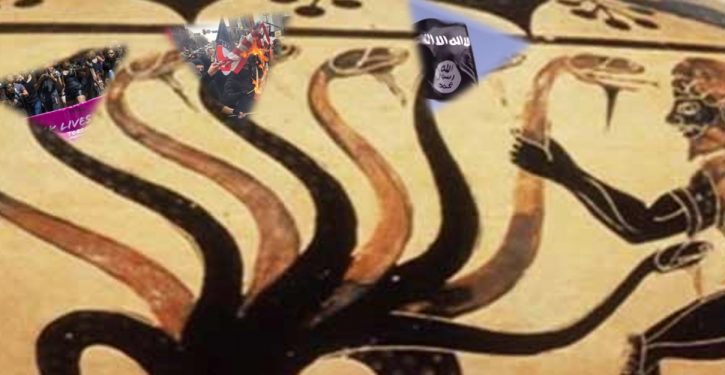
Art museums often get taxpayer subsidies, which help them buy up and hoard art. But at any given time, only a small percentage of that art is on display. Indeed, much of it is kept locked away in basements or storage facilities for years on end. Yet, if museums sell this art that no one is looking at, to meet their operating expenses, this is viewed as as a “scandal” and breach of ethics by arts groups — even though that selling the art would enable them to operate without taxpayer subsidies.
Crispin Sartwell discusses this oddity in “Free the Art! Sell the Art!“:
the argument that major museums should have all the important art because it then will be available for public view is detached from reality. That’s not how these institutions operate. At any given time, the Guggenheim displays about 2 percent of its collection. In 2015, according to the BBC, the Museum of Modern Art (MOMA) was showing 24 of its 1,221 works by Picasso, one of its 145 by Ed Ruscha, nine of its 156 Mirós. Many less familiar but important artists are kept completely in storage, virtually all of their work invisible.
My partner, Jane Irish, is a painter. In 2013, in a complex transaction, her gallery sold her anti-war painting Operation RAW Tableau to a collector, who donated it immediately to the Hirshhorn Museum in D.C., the whole process shepherded along by curators at the museum. That’s a fairly typical way for a work to enter a museum collection. The collector specifically believed that the work, a historical treatment of Vietnam Veterans Against the War, ought to be on display in D.C. The museum appeared to agree.
Jane was happy about the transaction at the time. Not only is it a nice résumé item to be in the Hirshhorn’s collection, but the heart of her decades-long project is bringing attention to the courage of anti-war veterans. Though the work was about Vietnam, it was made in the context of the war on terror; it commented on the situation obliquely. But throughout the Iraq and Afghan wars, even as new anti-war veterans’ groups emerged, the Hirshhorn never showed the painting. She has not herself seen it since the sale. She has no idea where it is. The average art patron who might be interested in her work will never know it exists.
It’s over there somewhere, in a vault or an offsite storage facility. Possibly she could arrange to see it herself by making a series of appointments. Possibly a scholar could access it through some elaborate request process. But no one is going to run into it unexpectedly and become interested.
She had a similar experience with the Philadelphia Museum of Art. Many people have had similar experiences; it is typical of artists whose reputation is relatively high, but who are not superstars. It’s almost as though these museums are buying works of art in order to hide them away.



